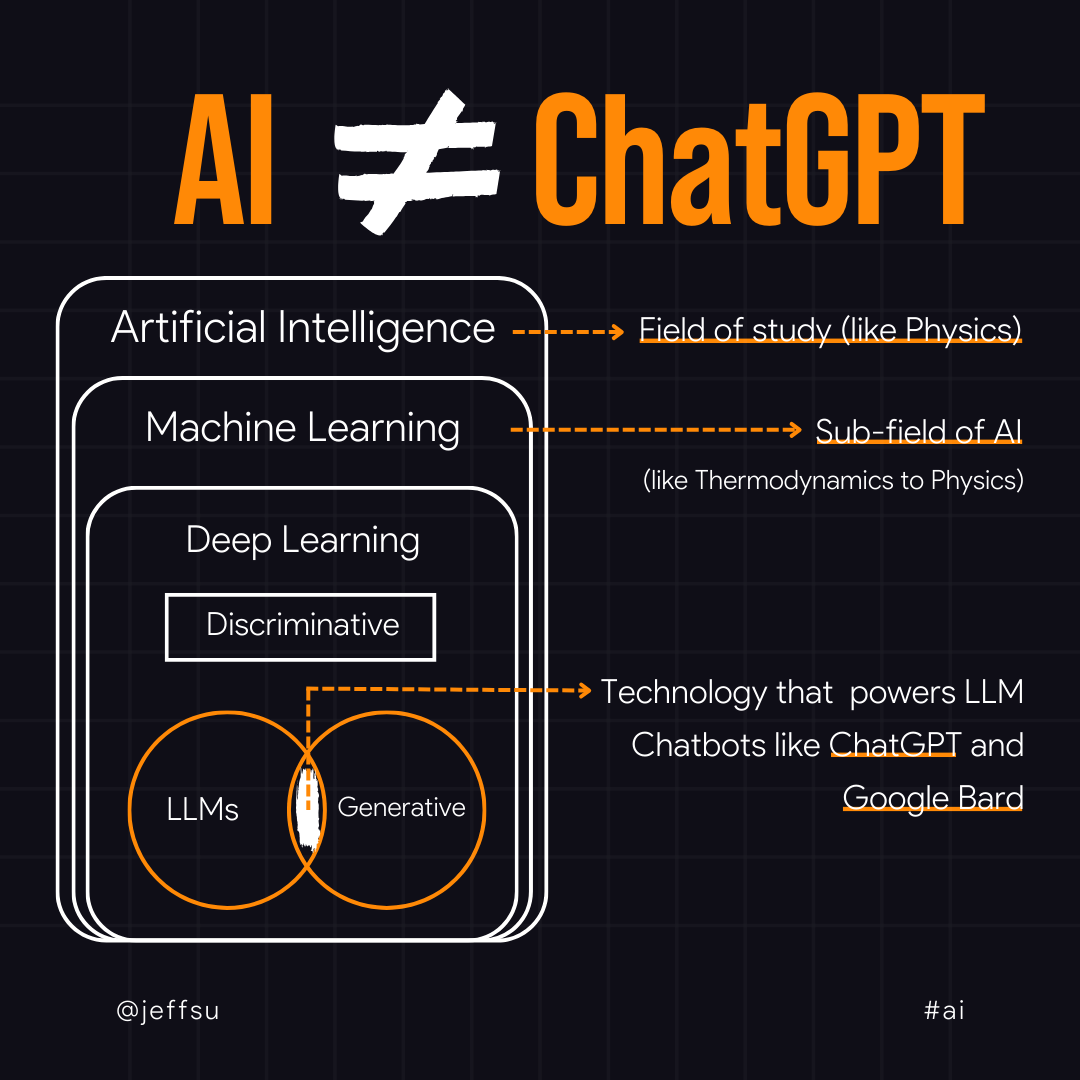Google's Intro to AI Course (for beginners)
Diving into the world of artificial intelligence (AI) can be daunting, especially for those without a technical background.
This post unpacks Google's comprehensive 4-hour AI Course for Beginners, distilling it into key insights and practical takeaways.
Watch the video instead
Key Takeaways
- Understanding AI and Its subfields: AI is a broad field, encompassing Machine Learning (ML) and Deep Learning, each with their unique applications and models.
- Machine Learning – Predictive Power: ML uses input data to train models for making predictions, with supervised and unsupervised learning models being the most common types.
- Deep Learning and Generative AI: Deep Learning, an advanced form of ML, utilizes artificial neural networks, leading to innovations like semi-supervised learning and generative AI models.
What is Artificial Intelligence?

Many perceive AI as a singular technology, but it's actually an expansive field like physics, with Machine Learning as a subfield, akin to Thermodynamics.
Deep Learning is a subset of ML, which branches further into discriminative and generative models.
Large Language Models (LLMs) like ChatGPT and Google Bard are situated at this intersection, showcasing the practical applications of these technologies.
What is Machine Learning?
Machine Learning revolves around training models with data to make predictions on new, unseen information.
- Take, for instance, using Nike sales data to predict Adidas shoe sales.
ML is split into two main types: supervised learning, which uses labeled data (like predicting tips based on restaurant bills and delivery status), and unsupervised learning, which operates on unlabeled data (like categorizing employees based on tenure and income without explicit labels).
What is Deep Learning?
Deep Learning, a specialized form of ML, is driven by artificial neural networks, reminiscent of the human brain's structure.
A key feature of Deep Learning is semi-supervised learning, where a model is trained on a mix of labeled and unlabeled data, exemplified by banks using it to detect fraudulent transactions.
What is Generative AI?
Generative AI, in contrast to discriminative models that classify data, learns patterns in data to generate new, unique outputs.
- For example, it can create new images of animals not by labeling existing ones but by understanding their common characteristics.
This ability to generate novel content, whether text, images, or audio, sets generative AI apart.
What are Large Language Models?
LLMs, a subset of Deep Learning, are initially trained on vast data sets and later fine-tuned for specific purposes.
- This is similar to training a pet dog with basic commands and then specializing it for roles like a guide dog.
- In the AI world, this translates to pre-training LLMs for general language tasks, then fine-tuning them for sector-specific applications, like healthcare.
To summarize
AI, Machine Learning, and Deep Learning are not just tech buzzwords but represent layers of a complex and fascinating field.
From the broad strokes of AI to the intricate workings of generative models and LLMs, understanding these concepts not only enhances our appreciation of technologies like ChatGPT and Google Bard but also empowers us to envision their future applications.
Interested in learning more?
Google's course is pretty conceptual so make sure to check out my video on how to master prompting (in just 8 minutes)!